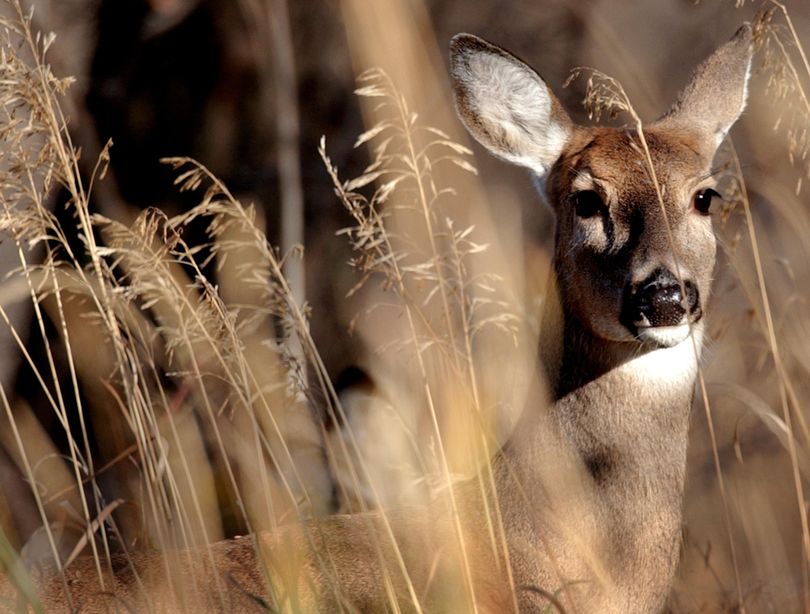Bluetongue claims about 1,000 Idaho whitetails so far, officials say

WILDLIFE -- The continuing bluetongue outbreak plaguing deer in the region has taken roughly 1,000 whitetails -- so far -- in Idaho alone, officials say today.
During my interviews on Friday for a Page 1 story about the bluetongue outbreak in Eastern Washington, Idaho and northeastern Oregon, officials said they were unprepared to make estimates on the toll the hemorrhagic disease was taking on big game. Washington officials still aren't attempting to take a stab at numbers other than saying it's the most widespread bluetongue outbreak they've documented.
Idaho has just posted it's first update since both Washington and Idaho confirmed the bluetongue outbreak was significant in mid-September.
Here's the release just posted by Idaho Fish and Game:
Based on continuing reports of dead deer, Fish and Game officials estimate up to 1,000 whitetails have died from an outbreak of bluetongue, a virus transmitted by gnats that is similar to Epizootic Hemorrhagic Disease (EHD). It is difficult to get the exact number of diseased or dead animals, but the outbreak is not expected to significantly reduce whitetail populations, or affect hunting season that opens Oct. 10.
Bluetongue is transmitted the same way as EHD and is a similar disease. Neither poses a threat to humans. Gnats transport the virus from animal to animal. Outbreaks become more severe during hot, dry summers when animals congregate around water sources with muddy shorelines that are prime breeding ground for gnats.
The disease has hit whitetail herds in the Grangeville, Whitebird, Harpster, Juliaetta, Kendrick, Troy, Deary and nearby areas this summer.
The Clearwater area had a large-scale outbreak of EHD in 2003, and Fish and Game officials estimated up to 10,000 whitetails died. There were smaller local EHD outbreaks in the last five years.
Bluetongue is less common than EHD, but it’s found in livestock throughout the Great Basin, although rarely fatal to livestock, according to Mark Drew, Fish and Game’s state wildlife veterinarian. Drew noted that deer that have survived past EHD outbreaks build immunity to the disease and pass that immunity to their offspring, but exposure to EHD does not make them immune to bluetongue.
This year’s outbreak is not expected to be anywhere near 2003 in terms of deer die offs, and neither bluetongue nor EHD has long-term, significant population impacts on white-tailed deer. Idaho’s whitetail populations are high, and hunters will find deer, but the outbreak could affect local herds.
Hunters are advised that they should not harvest obviously sick deer. The virus cannot infect humans, so even in areas where EHD or bluetongue is present, consumption of meat from animals that are not obviously sick poses no significant health risks to humans.
The outbreak typically winds down when the first hard frost kills the gnat population. Some areas in North Idaho have already had frost, and it typically hits most of northern and central Idaho by mid October, depending on elevation.
Dr. Bill Barton, state veterinarian for Idaho Department of Agriculture, said they are monitoring the outbreak, but have not seen any significant outbreaks in sheep, which is the most likely livestock to be affected. He said less than 10 sheep have tested positive for exposure to bluetongue and shown symptoms, and the disease is not likely to affect cattle or horses.
The bluetongue outbreak is not limited to Idaho. Deer with bluetongue are also confirmed in Eastern Washington and Northeast Oregon this fall.